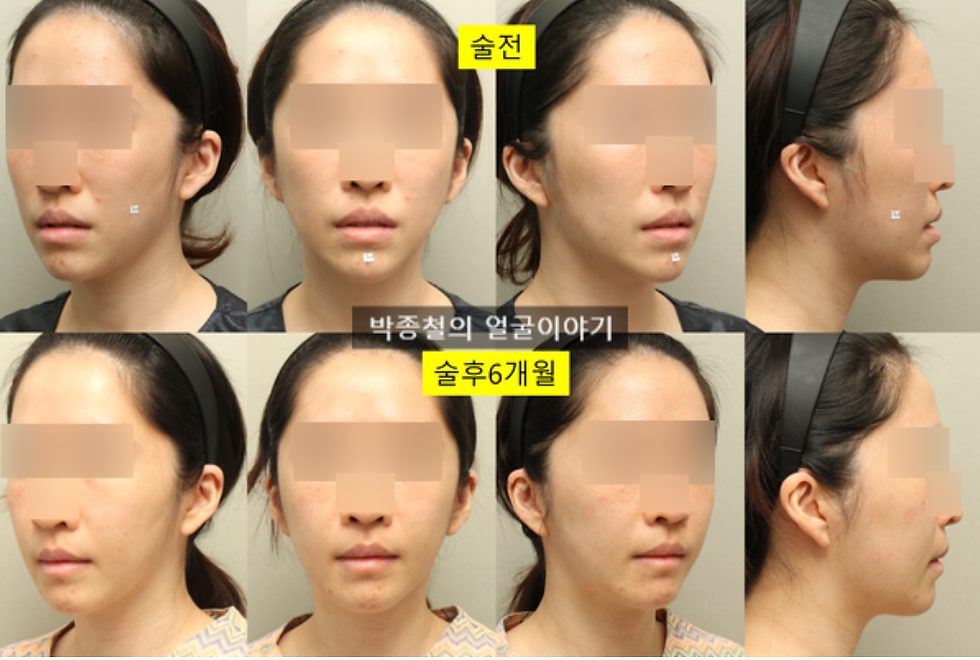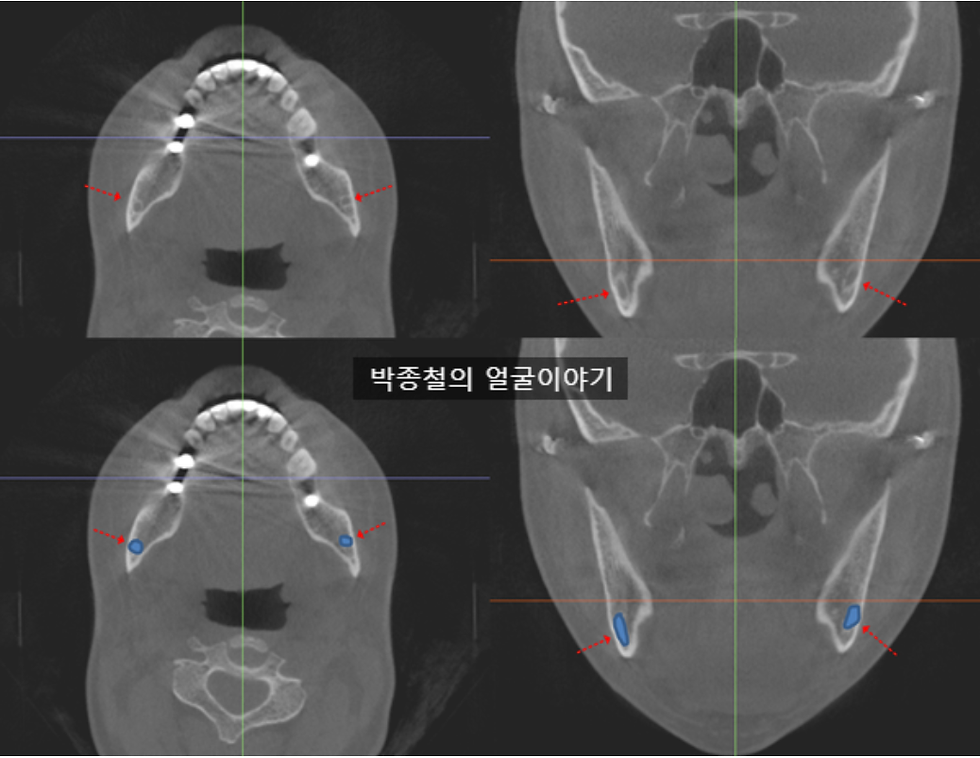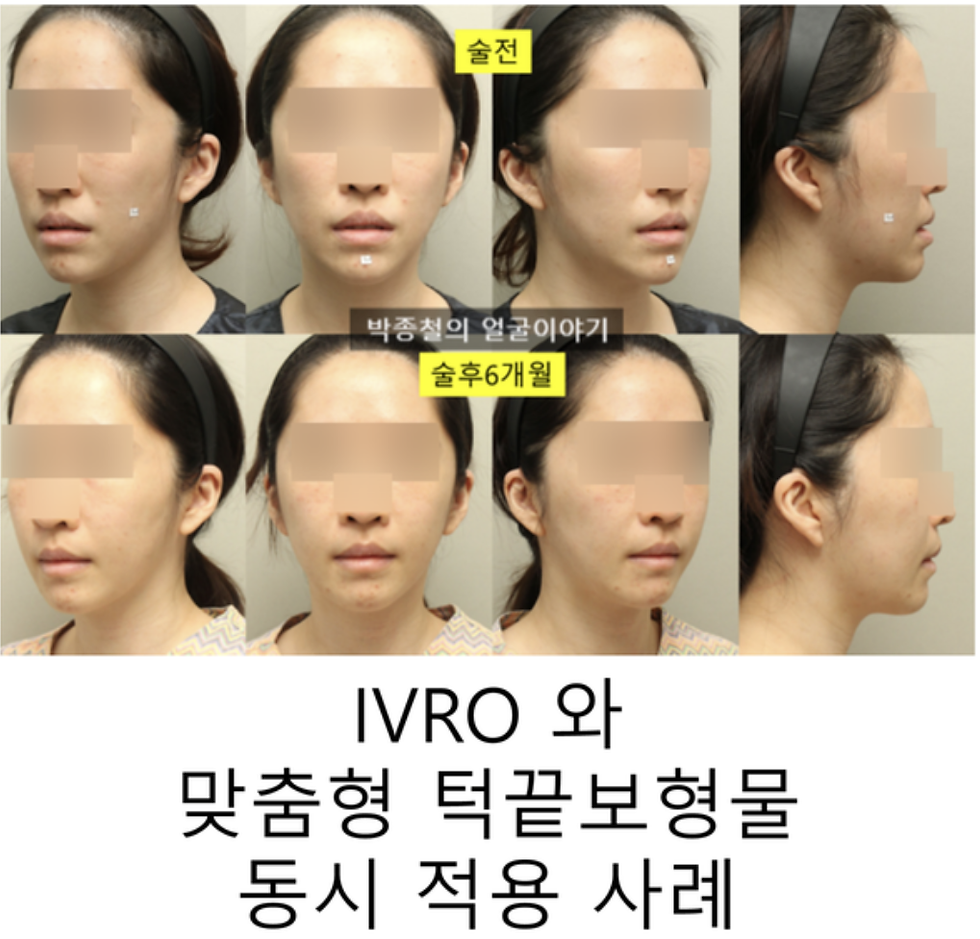Double Jaw Surgery for Gummy Smile: A Before & After Case Study
- Dr. Park

- Aug 28
- 4 min read
Hello, I am Dr. Park Jong-cheol, an Oral and Maxillofacial Surgeon.
Today, I would like to share a helpful case study for those considering double jaw surgery, particularly for gummy smile correction. This post will provide an objective look at the double jaw surgery before and after transformation and explain how a custom chin implant can further enhance the final results. We will explore a case where IVRO was a more suitable surgical
Patient's Pre-Surgical Concerns & Analysis
The patient presented with two main concerns: first, the excessive exposure of her gums when smiling, known as a "gummy smile," and second, a recessed mid-face, which made the area next to her nose appear sunken.


A thorough skeletal analysis revealed that while she did not have a classic underbite (prognathism), her lower lip protruded past her upper lip. Furthermore, her subnasale (the point under the nose) was positioned behind the pogonion (the most forward point of the chin), contributing to the appearance of an underdeveloped mid-face.
This skeletal structure is closely linked to a gummy smile. To hide the exposed gums, patients often unconsciously pull their upper lip down, making it appear thin. To close the mouth, they strain the lower lip and chin muscles, which can create a bunched-up appearance at the chin and mimic the look of an underbite.

This phenomenon was confirmed by comparing images of the patient with her lips relaxed (CR) versus her habitual bite (CO). The muscle tension required to close her lips created a pseudo-prognathic look. The fundamental solution was to surgically create a condition where her lips could close naturally without strain. As the patient wanted to correct her gummy smile without undergoing orthodontic treatment, double jaw surgery was the most appropriate solution.
Surgical Plan: Prioritizing Safety and Aesthetics
Based on a comprehensive review of the patient's anatomical structure and aesthetic goals, the following surgical plan was established:
Maxilla (Upper Jaw - Le Fort I Osteotomy): To correct the gummy smile, the primary goal was to move the upper jaw vertically. The plan involved a superior (upward) movement of approximately 5.5mm at the incisors, combined with a slight anterior (forward) movement to add volume to the mid-face.
Mandible (Lower Jaw - IVRO): The patient had undergone previous facial contouring surgery, which left the inferior alveolar nerve canal very close to the outer cortical bone. Performing a standard SSRO (Sagittal Split Ramus Osteotomy) would carry a relatively high risk of nerve damage. Therefore, to minimize this risk, we opted for an IVRO (Intraoral Vertical Ramus Osteotomy).
Before & After: Data and Real-Life Changes

A comparison of the pre-operative and 6-month post-operative CT scans confirms that the maxilla was precisely moved upward as planned. By overlaying a horizontal line at the same point, we can objectively measure the skeletal changes.

The 6-month follow-up photos clearly show that the patient's lips now meet comfortably without any unnecessary tension. This is one of the most significant before and after changes, demonstrating both functional and aesthetic improvement.

The patient's primary concern, the gummy smile, has been significantly improved. She can now smile confidently without worrying about excessive gum exposure
Why IVRO? The Safer Choice for This Case
The primary reason for choosing the IVRO technique for this patient was safety. Due to her previous surgery, the proximity of the nerve canal to the bone surface made minimizing the risk of nerve injury our top priority.

However, it is important to consider the specific characteristics of the IVRO procedure:
It can result in a slight reduction of the mandibular angle (the "squareness" of the jaw).
It requires a period of intermaxillary fixation (wiring the jaw shut) for about two weeks.
Compared to SSRO, there may be a slightly higher potential for skeletal relapse, which demands meticulous planning.
Perfecting the Profile: The Custom Chin Implant
The patient also desired more volume and projection in her chin area. We removed her existing implant and, using 3D modeling and printing technology, created a custom chin implant that was perfectly contoured to her unique jawline.

As seen in the post-operative photo, the custom chin implant naturally augmented the chin, contributing to a more harmonious and balanced facial profile.

Conclusion: The Key to Success is a Personalized Plan
This case study demonstrates that for gummy smile surgery, IVRO can be a safer and more appropriate choice than SSRO, depending on the patient's unique anatomy and surgical history.
Six months after surgery, the patient achieved a comprehensive improvement: her gummy smile was corrected, her lip closure was natural and effortless, and her chin line was beautifully enhanced with a custom implant, leading to a very high level of satisfaction.
Ultimately, a successful double jaw surgery before and after result depends on a meticulous, personalized surgical plan that thoroughly considers the patient's skeletal structure, soft tissues, and aesthetic goals.
Thank you for reading.




Comments